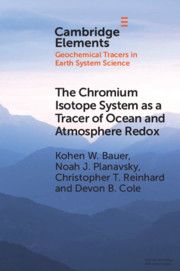Element contents
The Chromium Isotope System as a Tracer of Ocean and Atmosphere Redox
Published online by Cambridge University Press: 26 January 2021
Summary
- Type
- Element
- Information
- Online ISBN: 9781108870443Publisher: Cambridge University PressPrint publication: 25 February 2021
References
- 11
- Cited by

